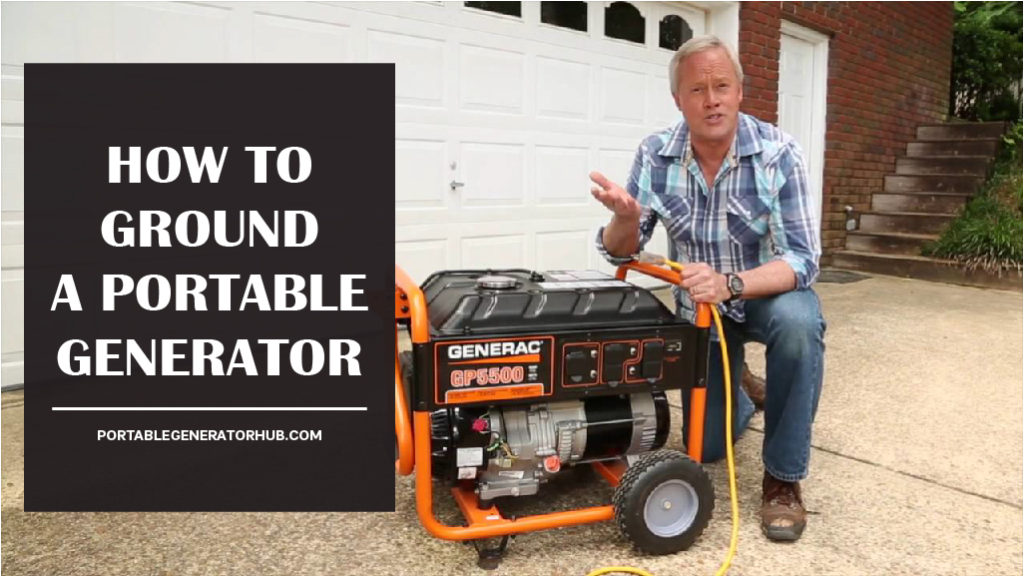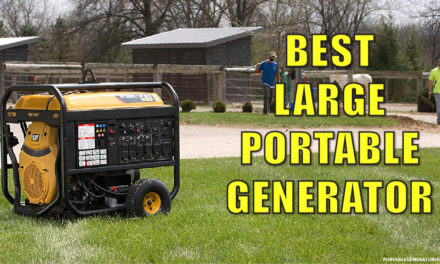
Portable generator can be very handy in your everyday life, especially on your outings. If you are on a trip, it is always a good idea to bring a portable generator.
A portable generator makes it easy to power up your equipment very quickly. Portable generators generate electricity through an onboard alternator, which is then utilized to power your home.
It includes a gas engine and outlets to which extensions can be connected to power a variety of objects. When you need extra electricity, it powers your equipment and appliances. They usually have two electrical outlets and run on gasoline, diesel, or propane.
It is very important to learn to properly use it, set it up, and ground it if necessary. Not every portable generators need to be grounded, and some may need to be grounded, some might not.
This article will help you learn how to ground portable chargers in the safest possible way.
Do You Need to Ground Your Generator?
To find the answer to this question, you can just check the owner’s manual. If you want to know before you buy, then you should post the question to the seller to be sure.
You don’t need grounding if your generator is not a separately derived system. That’s a description that applies to best rated portable generators these days. They have the engine, fuel tank, and the housing of the generator bonded to the frame, so there’s no need for grounding.
But if your manual says the generator needs to be grounded, then it has to be done. If there’s ever a short circuit, a generator that’s not been grounded can cause a fire. So it’s necessary to learn how to properly ground a portable generator.
What is Grounding Anyway?
The term “grounding” alludes to connecting an electrical circuit to a reference ground. In the case of your portable generator, the electrical circuit is the generator frame.
Then you have to install a grounding rod which functions as the reference ground. It’s not really a complicated procedure.
Basically, the act of grounding involves connecting a copper wire from the frame of the generator to the grounding rod. That’s basically it.
Where can I Ground my Portable Generator?
Grounding allows electricity to return to the ground in the most efficient method possible through your electrical panel. Basically, grounding entails allowing some excess energy flow to return to the ground.
The portable generator must be connected to a grounding electrode system, such as a driven ground rod to provide electric power to a structure via a transfer switch.
A qualified electrician must authorize the transfer switch for usage and install it according to the manufacturer’s installation instructions.
The Tools You Need
To do the job, first you need the right tools. You will need:
- A good set of wire strippers. This is to strip the copper wire safely and cleanly.
- Lots of solid copper grounding wire. You’ll want to make sure you can connect the wire to the generator and the copper rod with a bit of wire length for insurance.
- This is to loosen a bolt on the generator so you can attach the copper wire to the generator.
- A copper ground rod that’s at least 4 feet long. However, the NEC says that the ground rod should be at least 8 feet long.
- A hammer or similar tool (like a mallet). This is to drive the copper grounding rod into the ground (which is why “grounding” is the name of the procedure).
- A bit of water. You can use this to make the ground softer so you can drive the copper rod into the ground more easily.
- A good set of pliers. You’ll need this to wind the copper wire tightly around the copper rod.
How to Ground a Portable Generator Properly? 5 Easy Steps
Safety is a significant concern while we are dealing with electronic devices. Grounding portable generators make it safer. If you have a portable generator that needs to be grounded, you need to maintain some steps.
Step 1:
Gather all necessary tools. In order to ground a portable generator, you will need a copper rod, copper wire, hammer, wire strippers, wrench and pliers. These are essential for grounding a portable generator.
Step 2:
Using the hammer, you need to drive the copper Earth rod at least 8 feet into the ground. Although a 4-foot rod is available, 8 feet is typical for home installations. This depth ensures that any electrical discharge from the grounding rod does not electrocute anyone on the ground.
It’s possible that the surface is too hard for your grounding rod to settle smoothly. If you’re having trouble sinking the rod, sprinkle some water on it and wait until the earth softens. If you don’t want to do that, you can sink the rod at a unique angle. You can choose an angle that isn’t more than 45 degrees.
Step 3:
Stripping the copper wire at both ends is the third step. You have to take your wire stripper and strip both ends of the copper wire you are going to use.
But this is a critical part, so you need to be careful doing it. You do not want to over strip the wire, leaving most of it bare.
Step 4:
The next step is to connect one of the wires with your grounding rod. You can use your pliers to ensure that you have correctly connected the wire with the rod.
Step 5:
Then, lastly, to ground the generator, attach the other stripped end of your copper wire to it. Using the wrench, loosen the grounding bolt a little and wrap the wire securely around it before retightening the bolt to complete the process.
Is a ground rod required for a portable generator?
If the transfer switch on your generator allows you to transfer current to a neutral ground conductor, the components of your generator are an independently developed system. This necessitates the use of a separate grounding rod for your generator.
If you want to ground your generator, a ground rod is needed. Usually, a copper rod is used as a grounding rod. A copper rod is designed to be pushed into the ground and safely dissipate any electrical current.
A copper rod of at least four feet in length is required for most portable generators, while a longer rod can make driving it deeper into the ground easier.
Do I need to ground my generator when camping?
Camping is a fun experience, but it loses its spark when you cannot access light or power. When you have a portable generator with you, it makes your experience of camping twice as better. But portable generators could be unsafe if you are not dealing with them properly.
Grounding a portable generator might seem like a hassle. But safety is an important factor. And grounding a generator makes it safe for you.
If you do not have a generator that is pre grounded, you will need to ground your portable generator. It will lessen the chances of you getting electrocuted and also stop your electronic devices from being damaged.
What happens if you don’t ground a generator?
Grounding a generator is an important step. And it is an absolute necessity if you have portable generators that are not pre grounded. If you do not ground a generator, it creates risk for you. You risk harming your electrical equipment if you don’t ground your generator.
If you dont ground it, wiring or sensitive circuitry may be impacted posing a risk of electrocution. Your electrical equipment may potentially overheat, posing a fire hazard.
You do not want to experience issues as such, so you should ground your portable generator.
Final Words:
Portable generators are beneficial. It is not only efficient but quite easy to use as well. All you have to do is check what kind of portable generator you are using. If you find out you are using a portable that is not pre-grounded, you need to ground it.
For a safer experience, you must ground your portable generator. Otherwise, it might create a situation you do not want to experience.





